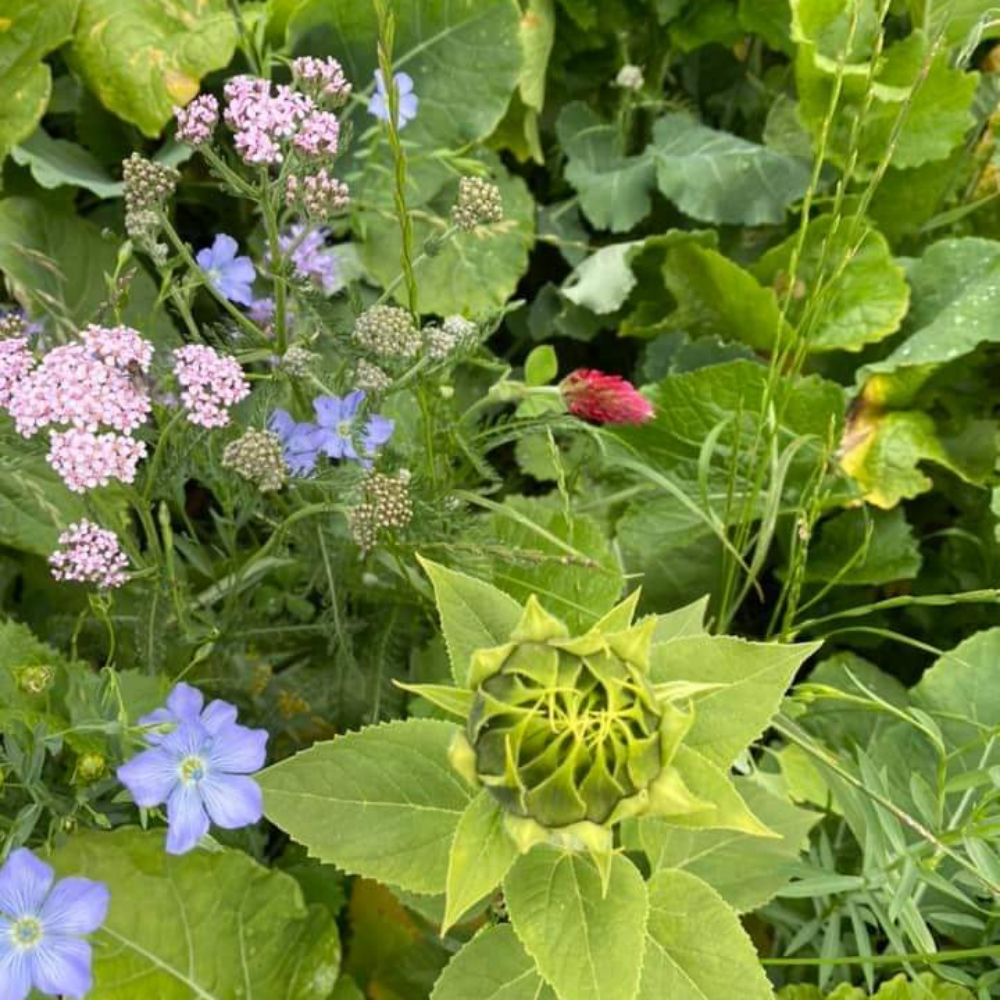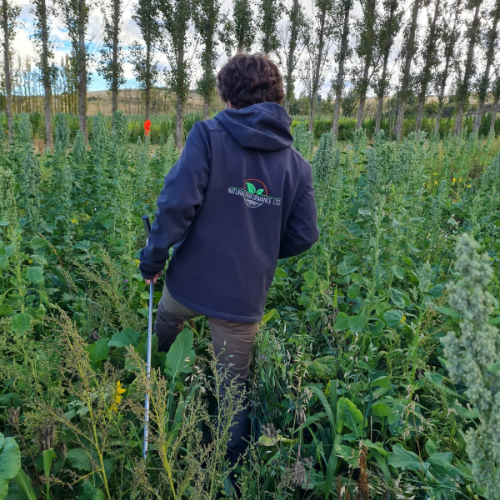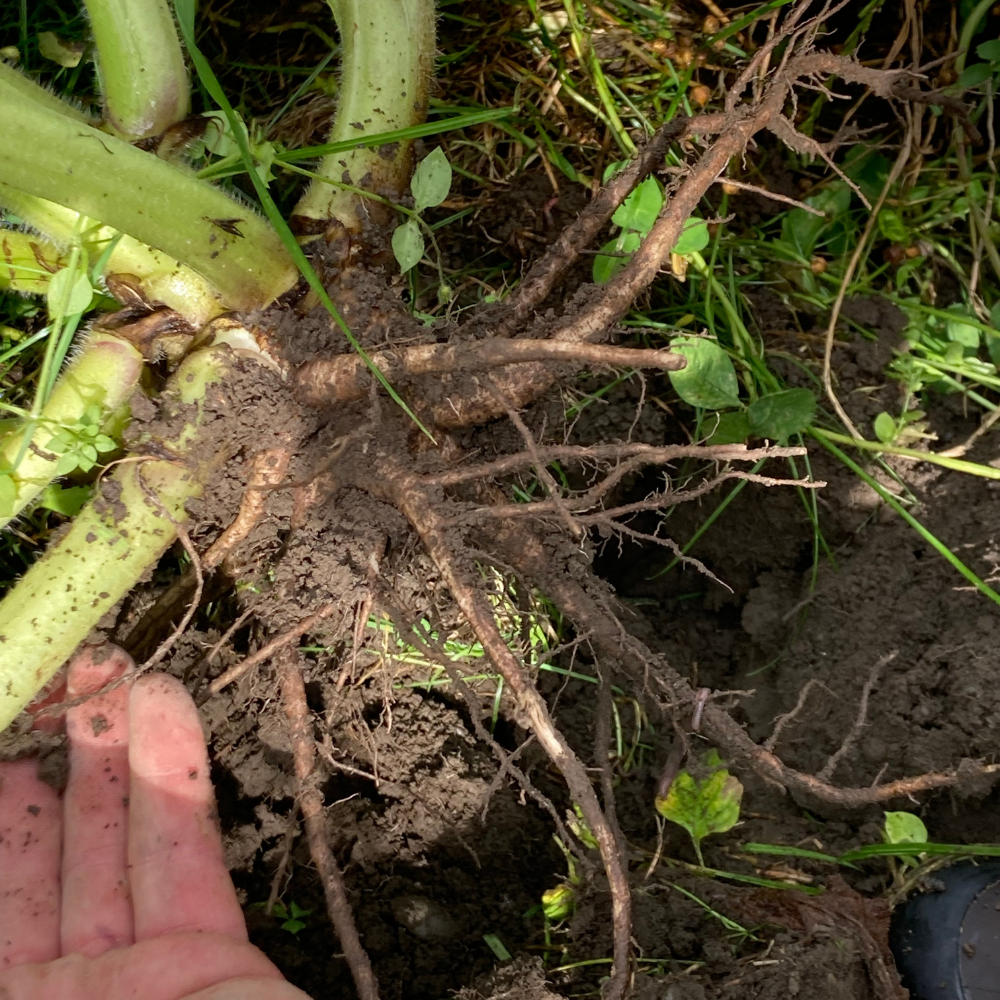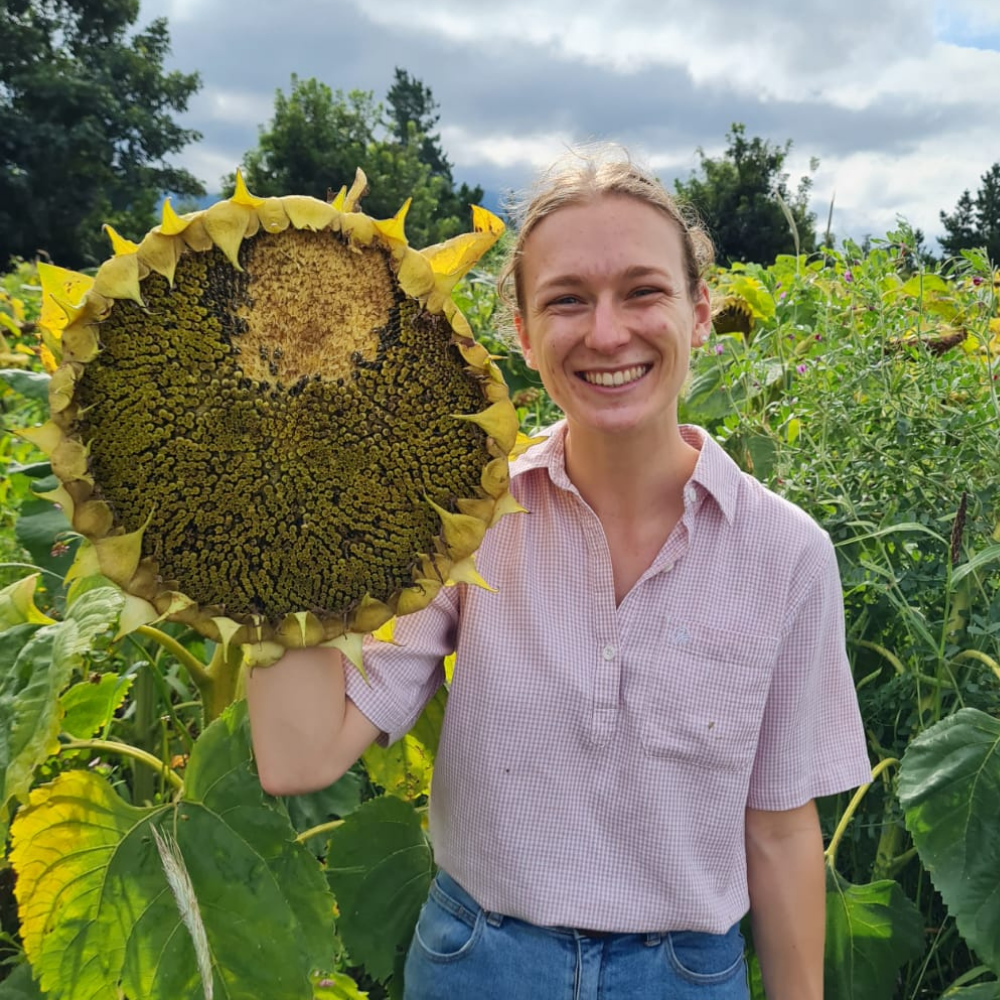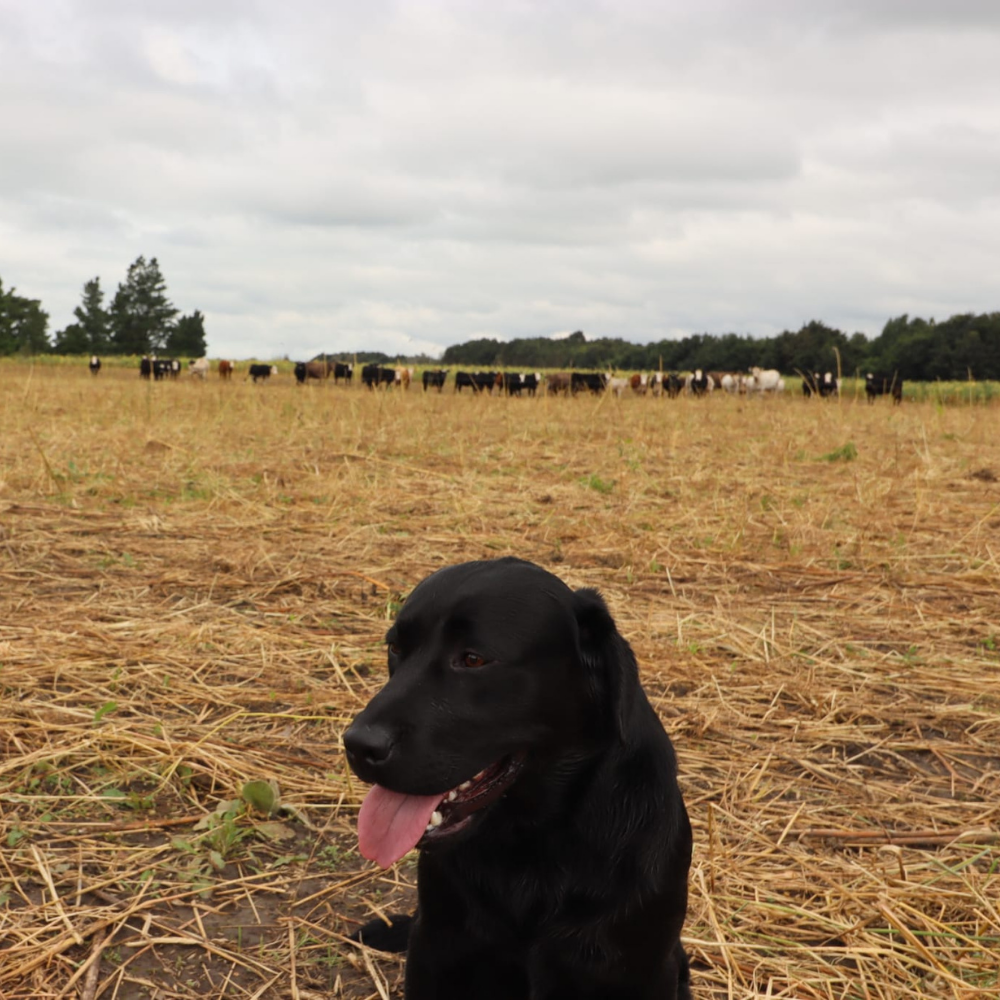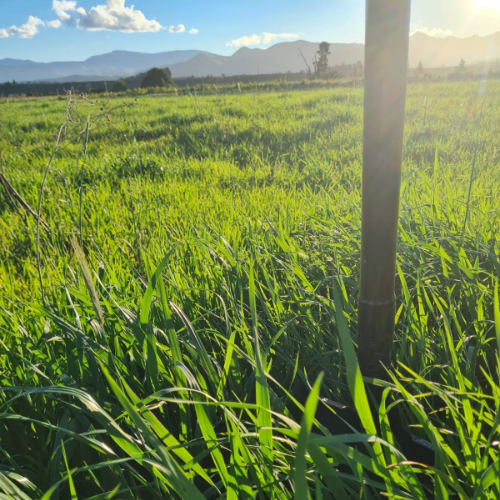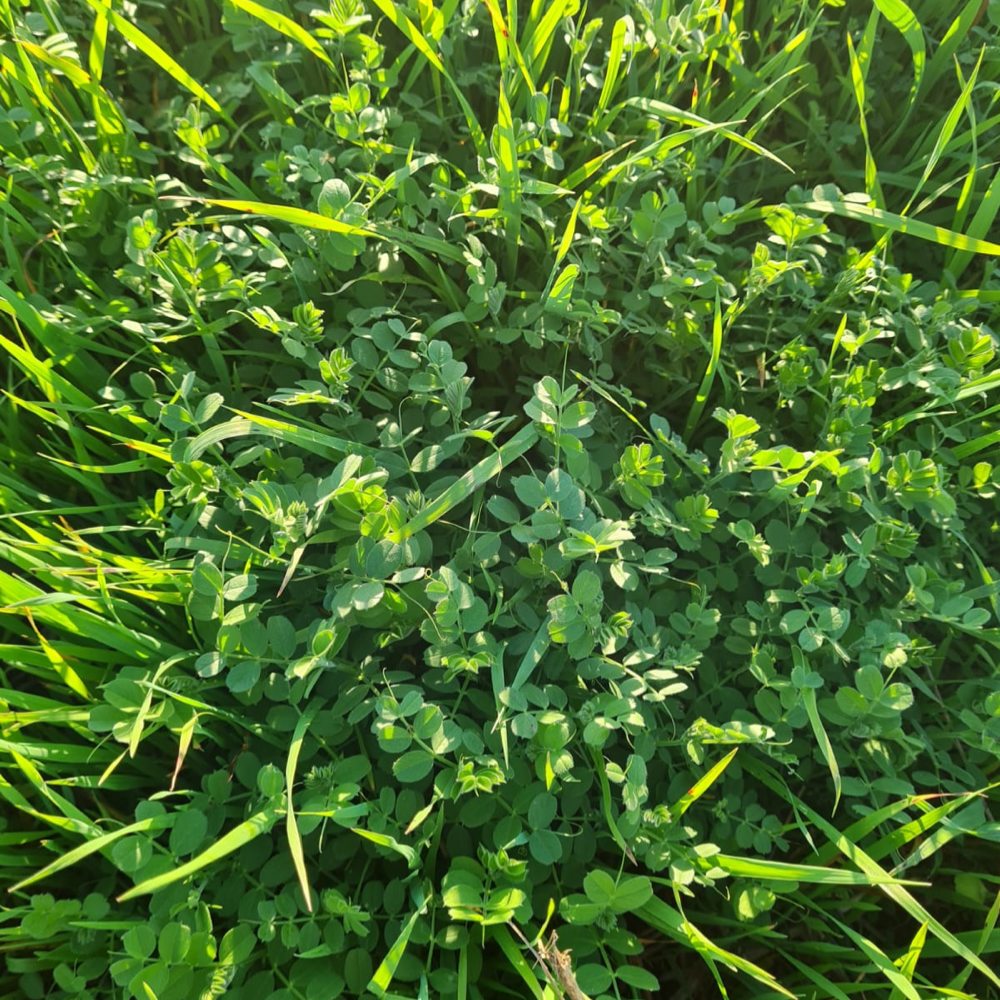Multi-Species Winter Forage Crops A ‘No-Brainer’
As written in Rural Contractor and Large Scale Farming; Special Edition - Green to Gold, Spring 2022
COULD YOU IMAGINE EATING THE SAME THING EVERY DAY SINCE YOU WERE WEANED? WE KNOW IT IS NOT IDEAL FOR US, YET WE ARE ONLY JUST REALISING IT IS NOT IDEAL FOR FARM ANIMALS EITHER.
Jono Frew is a co-owner (with Peter Barrett of Linnburn Station) of Symbiosis Ltd, a seed mix provision company focused on the interconnections between soil, plant, and animal health.
Jono says a varied plant diet is better for animal health and it is also beneficial for the soil. The different plants’ roots feed different microbes in the soil and, when grazed, feed different microbes in the rumen, which means they provide different nutrients for the animal.
“Eating one thing all your life doesn’t end well.”
It is not only multi-species pastures that feed animals in the time of abundance that Jono and Peter focus on. They say mutliple species are also important for winter forage crops.
During his agricultural career, Jono has been many things, including a spray contractor and dairy farmer.
“My background is in chemical agronomy. When I was responsible for winter crops, one thing that concerned me was the amount of animal health issues, especially acidosis with fodder beet.
“I have seen 50 animals drop dead when they broke through the fence. Dying from eating their food - that sent alarm bells.”
Another concern was broken shoulders in young stock fed fodder beet because it doesn’t have the nutrition required for young animals trying to grow bones.
“It’s just a high sugar, high energy diet.”
His other concerns with many winter crops are the cost to establish and care for them, soil degradation from compaction, the effects on water quality, and animal welfare.
“It is eye-watering how much chemical and fert goes on these crops. And when you drive past them, fodder beet especially, it stinks of anaerobic activity because of the methane they produce. For the animals there is often nowhere to sleep that is not mud.”
Jono says many farmers have the notion that the only choice is between fodder beet and kale. But now many are realising that diverse-species crops are far cheaper to produce, leave the soil in better shape after grazing, and make the animals healthier and more content.
“We can grow mixed crops of comparable tonnage as standard winter forage crops, and in most cases with no applied fertiliser.”
Multi species winter crops also offer more options when they are grazed, whether that is early or late in the season. Often they can be grazed multiple times.
So what is in these mixes? It depends on your soil type, soil health, and climate.
“We have had more than 20,000 hectares worth of experience in getting the balance of these species right.
“You can tell a lot by a soil visual assessment and by what weeds are growing. If you want to get rid of those weeds, then change the soil environment, rather than thinking spray will solve it.”
The lead crop in multi-species winter crops tends to be annuals. This is because they are more vigorous than perennials and they have as much happening below they soil as above it.
Other elements in the mix are members of the cereals, grasses, legumes, brassicas, herbs, and chenopods families. (The chenopod family includes spinach, beets, amaranth, and quinoa.)
Every species does a job. That includes breaking through compaction layers, cultivating, and feeding a wide variety of soil microbes to get the soil life pumping.
Some species will produce seed. These include cereals, annual clover, buckwheat, linseed, or phacelia.
Others, such as kale and other leafy greens, stay green to provide protein and keep soil organisms fed for late season grazings.
Jono says if there is a mix of green (protein) and brown (fibre) in the mix, there is no need to feed supplements.
The annuals are grazed down, seeds are trampled into the soil, and the brown stalks left over from seed production form an armour over the soil.
“When the animal stands on the soil, it spreads the weight, which eliminates severe pugging.”
At the end of the grazing, there are a lot of pluses. The soil is in better condition because that layer of plant matter has been trampled in, which boosts soil fungi.
The soil has been fertilised with manure, seeds are pressed into the soil, microbes are happy and well-fed from all those roots exuding carbohydrates into the soil, and the animals have had a varied diet.
FROM ANNUAL TO PERENNIAL
Then the next season the same paddock can be spring-grazed.
In healthier soils, perennials can then be drilled in to add more diversity to the mix in either spring or autumn,
“You are planting into functional soil, so you don’t have to worry about fertiliser, herbicides, or isecticides,” Jono says.
What you then have is a permanent diverse pasture. Usually farmers who work with Symbiosis Ltd then start on the next paddock, working their way through the farm.
“We have had permanent pastures in for 10 years that do not get additional fertiliser or seed and they are still pumping. But you have to manage them. If you over-graze, then you end up back with ryegrass and weeds.”
We have been talking about winter crops, but the same logic applies for summer crops. They should be planted when the soil temperature is 10 degrees and rising. The varieties will differ to suit a drier climate.
To get started, the current pasture is terminated. That can be by spraying out with glyphosates combined with fulvic acid, cultivation, or grazing (although Jono says grazing never gives as a good a result).
He says you should drill within 24 hours of terminating the old pasture, as you want your seeds, not weeds, to germinate.
These species mixes are suitable for all stock types and ages except horses.
“it is fascinating to watch sheep stand on their back legs to eat the tall standing crops.”
Another advantage they offer is the chance to take children into the winter paddocks.
“The crops don’t see any chemicals once they have been planted, and we usually don’t even use treated seed. The kids can go out and pick beans off the stalk and eat what the animals are eating.”
One Symbiosis Ltd client had a sideline selling sunflowers at the gate.
Jono and Peter’s clients have all-sized farms - from one ha up to 10,000 ha. Some have changed tack towards diverse species after seeing it on another property.
it can be quite difficult to get past the mindset that there should be one or two main species and everything else is just competition.
“If you haven’t seen it, it almost seems impossible. Once they see it for themselves, it is a no-brainer,” Jono says.




